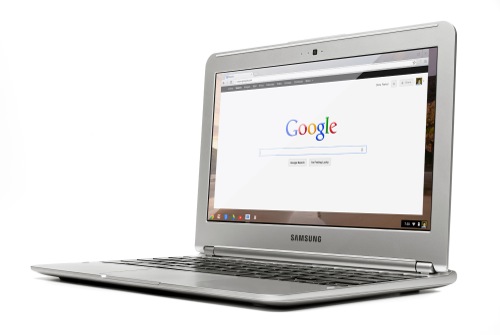Review: Samsung Chromebook — solid machine, perfect price

I have now had two weeks of continuous use on my new Samsung Chromebook, and it’s been everything I’ve been looking for. I do not intend this review to be a technical breakdown and the pros and cons of the technology, but rather a real life analysis of what the Chromebook has to offer.
I am writing this document using Google’s Docs program and am saving this on Google Drive using 100 gigabytes of free storage. They’re two of the features Google promises to make the Chromebook all you need in your mobile computing needs. And at this point, the company has delivered. My day-to-day usage includes creating and editing word documents for both pleasure and work, editing spreadsheets to keep track of my financial budget and miscellaneous sports stat tracking, file transfers for the TableTalk podcast, and web browsing that includes integrated chat programs, music listening, and quite a few tabs running at once. All of these tasks have been handled beautifully.
The browser operating system is the backbone of the Chromebook. It boasts Google’s many years of integration and cross platforming behind it, and I was rather impressed with the ease at which it set up. After turning the laptop on for the first time, and setting it up with my normal Gmail account, the browser instantly gathered my desktop’s bookmarks and history and aggregated them directly into my new device. Passwords weren’t moved, but that was fine with me, as I don’t want my passwords transferred over the web.
The program I’ve used most often has been Google Docs. It’s very functional — which is not to say it’s as good or better than Microsoft Word. It’s not. Formatting isn’t nearly as robust, and options for different text styles and fonts are not as far-reaching. However, for the purpose of developing documents for both school and personal publishing, it works fairly well. I ran into a few snags when attempting to cope with a document in an old Microsoft Word “doc” as opposed to the new standard “docx”. This is less a fault of Google Doc’s and more a telling circumstance of lagging behind the times for my current school.
I was originally drawn to the Samsung Chromebook because, quite frankly, it resembled a Macbook. I am a huge fan of the simplistic design and straightforward execution of the aesthetics of both the devices. When I finally got a chance to directly compare my Chromebook to a friend’s Macbook Pro from 2010, I was surprised just how similar they were.
The computer handles multitasking and the tabbed browsing as well as any Chrome browser — quick, smooth, effortlessly. I routinely have the new Spotify web based player running in a tab, as well as eight or nine tabs alternating between different websites at once. The Google Play store also offers a wide array of web applications to download — most free. I even downloaded a web-based Sonic the Hedgehog game to experience a bit of nostalgia.
The Chromebook offers a fast enough processor that has not shown my any slow down in daily use. The internal 16 gigabytes of storage was a major concern (especially with the Acer Chromebook offering a 320 gigabyte hard drive on their model) but that worry was put to rest when handed 100 gigs of free Google Drive space for two years. By the time that two years is up, I’ll have probably moved on to something else.
The battery life is appropriate for menial tasks, four to six hours of word processing and basic browsing. However, I was watching a hockey game through a flash, web-based video player in full screen, and saw a significant drop in estimated battery remaining. After about 35 minutes of viewing the game, the estimated life actually increased — based on the fact, I assumed, that I wasn’t doing anything else on the laptop. It charges quickly, only requiring about one and half hours after the initial boot to achieve a full charge, highly beneficial for those on the go.
You won’t be doing any serious video, sound, or image editing on the Chromebook. You won’t be rendering any massive 3D landscapes, or solving string theory with it. But for general use, it has everything you’ll need: solid battery life, a wide array of productive and entertaining applications, a good looking body with top-notch aesthetics, the wonderful (and sometimes alarming) integration of Google, and best of all, at only $249, a price point almost anyone can hit.
This review originally appeared, in a slightly different form, on guest contributor Brandon Harrison’s Table Talk blog.
Support Metro Weekly’s Journalism
These are challenging times for news organizations. And yet it’s crucial we stay active and provide vital resources and information to both our local readers and the world. So won’t you please take a moment and consider supporting Metro Weekly with a membership? For as little as $5 a month, you can help ensure Metro Weekly magazine and MetroWeekly.com remain free, viable resources as we provide the best, most diverse, culturally-resonant LGBTQ coverage in both the D.C. region and around the world. Memberships come with exclusive perks and discounts, your own personal digital delivery of each week’s magazine (and an archive), access to our Member's Lounge when it launches this fall, and exclusive members-only items like Metro Weekly Membership Mugs and Tote Bags! Check out all our membership levels here and please join us today!





















